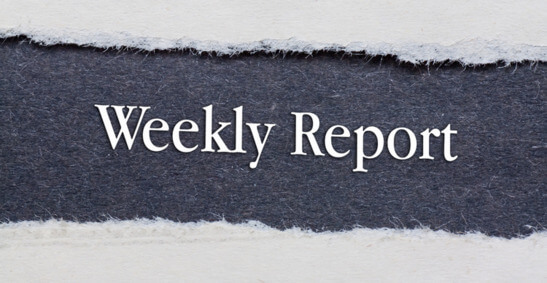In the dynamic landscape of brand marketing, creating a memorable and engaging identity is crucial for standing out from the competition. One effective tool that has been employed for decades to enhance brand narratives is the mascot. Mascots, often anthropomorphic or symbolic characters, serve as more than just a visual representation of a brand—they are integral to shaping and communicating a brand’s story, values, and personality. This blog delves into the multifaceted role of mascots in brand storytelling and how they can significantly impact brand perception and loyalty.
Understanding the Role of Mascots
Mascots have been a staple in marketing for years, and their role goes far beyond mere representation. They embody a brand’s values, create emotional connections with the audience, and enhance brand recall. From the friendly Pillsbury Doughboy to the energetic Geico Gecko, mascots can turn abstract brand concepts into relatable, tangible characters that resonate with consumers.
1. Creating Emotional Connections
One of the primary functions of a mascot is to foster emotional connections with the audience. Mascots often personify brand values or traits in a way that humanizes the brand. For instance, Tony the Tiger’s enthusiastic “They’re Gr-r-reat!” not only reflects the brand’s positive image but also makes the cereal more appealing to children and adults alike. By embodying traits that align with the brand’s identity, mascots create a sense of familiarity and trust among consumers.
2. Enhancing Brand Recognition
Mascots play a significant role in enhancing brand recognition. Their distinctive appearances and personalities make them easily recognizable and memorable. For example, the Michelin Man (Bibendum) has become synonymous with tire quality and reliability due to his iconic look and longstanding presence in advertising. This strong visual association helps the brand stand out in a crowded marketplace and reinforces brand identity.
3. Facilitating Storytelling
Effective brand narratives are often built around compelling stories, and mascots can be central characters in these stories. By incorporating mascots into brand stories, companies can create engaging and relatable narratives that capture the audience’s imagination. For instance, the M&M’s characters are not just candy pieces—they are distinct personalities with their own quirks and adventures, which helps to weave a more engaging and memorable brand narrative.
Leveraging Mascots for Brand Engagement
To fully leverage the power of mascots, brands must integrate them strategically into their marketing efforts. Here are several ways mascots can be used to enhance brand engagement:
1. Multichannel Marketing
Mascots can be effectively utilized across various marketing channels, including television, social media, and experiential marketing. For example, a mascot might appear in TV commercials, social media posts, and live events, creating a cohesive and omnipresent brand experience. This multichannel approach ensures that the mascot remains top-of-mind for consumers and reinforces the brand’s message consistently.
2. Interactive Campaigns
Engaging consumers through interactive campaigns involving mascots can drive deeper connections and participation. Brands can create contests, games, or social media challenges that feature their mascots, encouraging fans to interact and engage with the brand. This not only increases brand visibility but also fosters a sense of community and loyalty among consumers.
3. Brand Advocacy
Mascots can also act as brand advocates, embodying the brand’s voice and values in a way that resonates with consumers. For example, the Red Bull Racing Team’s use of the Red Bull Can as a mascot during events and promotions helps reinforce the brand’s adventurous and high-energy image. This advocacy can drive positive word-of-mouth and strengthen the brand’s reputation.
Case Studies: Successful Mascot Implementation
Examining successful mascot implementations can provide valuable insights into their effectiveness in elevating brand narratives. Here are a few notable examples:
1. Coca-Cola’s Polar Bears
Coca-Cola’s polar bears have become synonymous with the brand’s holiday campaigns. First introduced in the 1990s, these lovable characters embody the warmth and joy associated with Coca-Cola’s holiday season. Their endearing portrayal has contributed to the brand’s festive image and has become a cherished part of Coca-Cola’s marketing strategy.
2. KFC’s Colonel Sanders
Colonel Sanders, the founder of KFC, has been transformed into a mascot that represents the brand’s heritage and quality. His iconic white suit and goatee are instantly recognizable, and his persona embodies the brand’s commitment to serving delicious fried chicken. By using Colonel Sanders as a mascot, KFC reinforces its legacy and connection to its origins.
3. Mr. Clean
Mr. Clean, the bald and muscular character, has been a fixture in cleaning product marketing for decades. His image conveys strength, reliability, and effectiveness, which are key attributes of the brand’s products. Mr. Clean’s consistent presence in advertisements helps to reinforce the brand’s promise of a clean and spotless home.
The Future of Mascots in Brand Marketing
As brands continue to evolve and adapt to changing consumer preferences, the role of mascots is likely to evolve as well. The integration of digital technology and data-driven insights will enable brands to create more personalized and interactive mascot experiences. Virtual mascots and augmented reality could become more prevalent, offering new ways to engage with consumers and enhance brand narratives.
1. Virtual and Augmented Reality
With the rise of virtual and augmented reality technologies, mascots could take on new dimensions, offering immersive experiences for consumers. For example, a brand might use AR to bring a mascot to life in a consumer’s environment or use VR to create interactive experiences featuring the mascot. These technologies can offer unique ways to connect with audiences and create memorable brand experiences.
2. Personalization and Customization
Advancements in data analytics and AI can enable brands to tailor mascot interactions to individual consumer preferences. Personalized mascot experiences could enhance engagement and create a more meaningful connection with the audience. For example, a mascot could interact with consumers in a way that reflects their past interactions with the brand, creating a more personalized and relevant experience.
Mascots have proven to be powerful tools in elevating brand narratives and enhancing brand engagement. By creating emotional connections, enhancing brand recognition, and facilitating storytelling, mascots play a crucial role in shaping consumer perceptions and fostering brand loyalty. As brands continue to innovate and adapt to new technologies, the role of mascots will likely evolve, offering exciting new opportunities for brand storytelling and engagement.
Q&A
Q: How can a brand determine if a mascot is right for them?
A: A brand should consider several factors before deciding to adopt a mascot. These include the brand’s identity, target audience, and marketing goals. A mascot should align with the brand’s values and personality, and it should resonate with the target audience. Additionally, the mascot should be versatile enough to be used across various marketing channels and campaigns. Conducting market research and testing different mascot concepts can also help determine if a mascot is a good fit for the brand.
Get in Touch
Website – https://www.webinfomatrix.com
Mobile - +91 9212306116
Whatsapp – https://call.whatsapp.com/voice/9rqVJyqSNMhpdFkKPZGYK
Skype – shalabh.mishra
Telegram – shalabhmishra
Email - info@webinfomatrix.com









 English (US) ·
English (US) ·